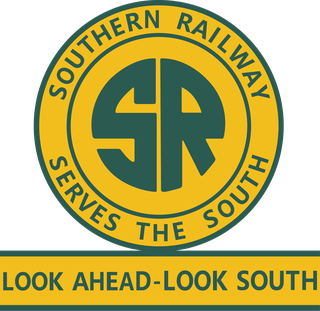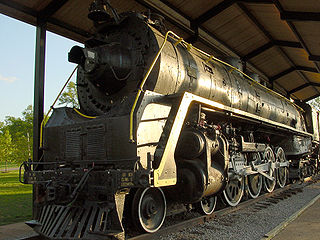
Walker County is a county located in the northwestern part of the U.S. state of Georgia. As of the 2010 census, the population was 68,756. The county seat is LaFayette. The county was created on December 18, 1833, from land formerly belonging to the Cherokee Indian Nation.

Chattanooga is a city in and the county seat of Hamilton County, Tennessee, along the Tennessee River bordering Georgia. The city also extends into Marion County on its western end. With a population of 181,099 in 2020, it is Tennessee's fourth-largest city and one of the two principal cities of East Tennessee, along with Knoxville. The city anchors the Chattanooga metropolitan area, Tennessee's fourth-largest metropolitan statistical area, as well as a larger three-state area that includes Southeast Tennessee, Northwest Georgia, and Northeast Alabama. Served by multiple railroads and Interstate highways, Chattanooga is a transit hub. It is 118 miles (190 km) northwest of Atlanta, Georgia, 112 miles (180 km) southwest of Knoxville, Tennessee, 134 miles (216 km) southeast of Nashville, Tennessee, 102 miles (164 km) east-northeast of Huntsville, Alabama, and 147 miles (237 km) northeast of Birmingham, Alabama.

U.S. Route 411 (US 411) is an alternate parallel-highway associated with US 11. US 411 extends for about 309.7 miles (498.4 km) from US 78 in Leeds, Alabama, to US 25W/US 70 in Newport, Tennessee. US 411 travels through northeastern Alabama, northwestern Georgia, and southeastern Tennessee. Notable towns and cities along its route include Gadsden, Alabama; Rome, Georgia; Cartersville, Georgia; Maryville, Tennessee; Sevierville, Tennessee, and Newport, Tennessee.

The Southern Railway was a class 1 railroad based in the Southern United States between 1894 and 1982, when it merged with the Norfolk & Western to form Norfolk Southern. The railroad was the product of nearly 150 predecessor lines that were combined, reorganized and recombined beginning in the 1830s, formally becoming the Southern Railway in 1894.

The Nashville, Chattanooga and St. Louis Railway was a railway company that operated in the U.S. states of Kentucky, Tennessee, Alabama, and Georgia. It began as the Nashville and Chattanooga Railroad, chartered in Nashville in December 11, 1845, built to 5 ft gauge and was the first railway to operate in the state of Tennessee. By the turn of the twentieth century, the NC&StL grew into one of the most important railway systems in the southern United States.

The Tennessee Valley Railroad Museum is a railroad museum and heritage railroad in Chattanooga, Tennessee.
The Cincinnati, New Orleans and Texas Pacific Railway is a railroad that runs from Cincinnati, Ohio, south to Chattanooga, Tennessee, forming part of the Norfolk Southern Railway system.

The Central of Georgia Railway started as the Central Rail Road and Canal Company in 1833. As a way to better attract investment capital, the railroad changed its name to Central Rail Road and Banking Company of Georgia. This railroad was constructed to join the Macon and Western Railroad at Macon, Georgia, in the United States, and run to Savannah. This created a rail link from Chattanooga, on the Tennessee River, to seaports on the Atlantic Ocean. It took from 1837 to 1843 to build the railroad from Savannah to the eastern bank of the Ocmulgee River at Macon; a bridge into the city was not built until 1851.

The Chattooga and Chickamauga Railway is a short-line railroad which is headquartered in LaFayette, Georgia, USA. The railroad operated 22 miles (35 km) of the Tennessee, Alabama and Georgia Railway from Chattanooga, Tennessee to Kensington, Georgia, which reverted to the Norfolk Southern System and was partially removed after the Dow Reichhold Specialty Latex LLC plant in Kensington closed in August 2008. The "C&C" also operates 42 miles (68 km) of the former Central of Georgia Railway from Chattanooga to Lyerly, Georgia. That line is leased from the state of Georgia.

The Alabama and Tennessee River Railway is a shortline railway operating over trackage formerly operated by CSX Transportation. The line's western terminus is a junction with the CSX main line in Birmingham, Alabama, near CSX's Boyles Yard. The eastern terminus is Guntersville, Alabama, near the Tennessee River. The parent company of the ATN is OmniTRAX, a major operator of American and Canadian short lines.
The Belt Railway of Chattanooga is a historic railroad in the United States. The railway was originally organized from the Union Railway Company and Chattanooga Union Railway in 1895, but was reorganized later that year by the Alabama Great Southern Railroad. The BRC operated about 45 miles (72 km) of track in and around Chattanooga, Tennessee. The railroad started near Warner Park and made its way several miles past the East Tennessee, Virginia line ending at Boyce Station.
The Chattanooga and Durham Railroad was established in 1897 from the failed attempt of a railroad that stretched from Durham, Georgia to Chickamauga, Tennessee, United States. The 17-mile railway was used to haul coal from Lookout Mountain in 1894. The railway was built atop a range of hills and ran from the foot of Lookout Mountain to the top. The Chattanooga and Durham was foreclosed in 1900 and changed to the Chattanooga, Rome and Southern Railroad. The Central of Georgia bought the railroad the next year and ran it for another fifty years before it became vacant in 1950.
The Chattanooga Southern Railway was founded in 1887 and began operations in 1891. It ran about 93 miles (150 km) of track between Chattanooga, Tennessee, and Gadsden, Alabama, hauling mainly iron, timber, and coal from the Lookout Mountain area. The railroad's nickname, The Pigeon Mountain Route, came from several miles of track that ran along the base of Pigeon Mountain. In 1896 the railroad ran into financial trouble and was reorganized as the Chattanooga Southern Railroad. The company operated under that name for about 15 years at which time it was again reorganized and began operating as the Tennessee, Alabama and Georgia Railway.

The East Tennessee, Virginia and Georgia Railroad (ETV&G) was a rail transport system that operated in the southeastern United States during the late 19th century. Created with the consolidation of the East Tennessee and Virginia Railroad and the East Tennessee and Georgia Railroad in 1869, the ETV&G played an important role in connecting East Tennessee and other isolated parts of Southern Appalachia with the rest of the country, and helped make Knoxville one of the region's major wholesaling centers. In 1894, the ETV&G merged with the Richmond and Danville Railroad to form the Southern Railway.
TAG Corner is a name for the region where the U.S. states of Tennessee, Alabama, and Georgia come together. It is a mountainous area dominated by the Cumberland Plateau and Lookout Mountain, with elevations ranging up to 2,000 feet/600 meters. The major routes of travel through the region are Interstate 59 and US 11, which follow a valley connecting Gadsden, Alabama in the southwest of the region with Chattanooga, Tennessee in the northeast.
The Kingsport Subdivision is a 133.2-mile railroad line owned and operated by CSX Transportation in the U.S. states of Kentucky, Virginia, and Tennessee. It was formerly part of the Huntington West Division. It became part of the CSX Florence Division on June 20, 2016. Running from Elkhorn City, Kentucky, south to Erwin, Tennessee, it forms the north half of the former Clinchfield Railroad; the south half, from Erwin to Spartanburg, South Carolina, is now the Blue Ridge Subdivision. From Elkhorn City, the line continues north as the Big Sandy Subdivision to Catlettsburg, Kentucky, on the Ohio River; trains can then continue to Ohio and other Midwest points. From Spartanburg, trains can continue to Georgia, Florida, or other Southeast states.

U.S. Route 11 (US 11) in the U.S. state of Georgia is a 22.8-mile-long (36.7 km) U.S. Highway the travels south-to-north through portions of Dade County in the northwestern part of the state. It is concurrent with State Route 58 (SR 58) for its entire length. In Georgia, the highway begins at the Alabama state line. It travels to its northern terminus at the Tennessee state line in Chattanooga, Tennessee.

Whiteside is an unincorporated community in Marion County, Tennessee. It was originally settled as a Cherokee town in the late eighteenth century.
The Alabama Great Southern Railroad is a railroad in the U.S. states of Alabama, Georgia, Louisiana, Mississippi, and Tennessee. It is an operating subsidiary of the Norfolk Southern Corporation (NS), running southwest from Chattanooga to New Orleans through Birmingham and Meridian. The AGS also owns about a 30% interest in the Kansas City Southern-controlled Meridian-Shreveport Meridian Speedway.













